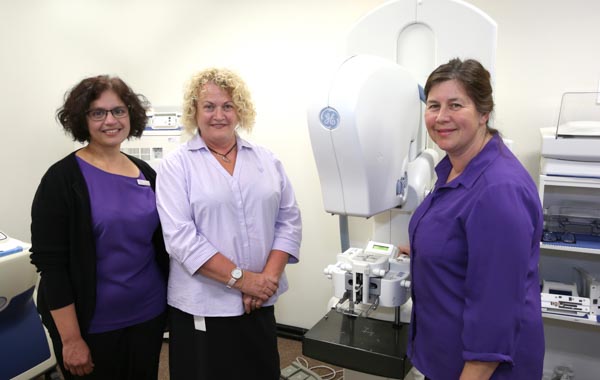
Changing prostate cancer treatment: Pacific Radiology
We’re nearing the end of Blue September, the month to raise awareness of prostate cancer. It is the most common cancer in men in New Zealand but fortunately, when detected early, prostate cancer has an excellent cure rate.

A PSMA (prostate specific membrane antigen) study is an imaging test that determines the position and extent of prostate cancer. Pacific Radiology uses Positron Emission Tomography (PET) and low dose computed tomography (CT) imaging, in conjunction with Magnetic Resonance Imaging (MR), to help doctors assess the staging of prostate cancer treatment. Pacific Radiology radiologist Dr Justin Hegarty specialises in interpreting the PSMA and MR images. “We are starting to rely more on imaging to help diagnose as well as guide treatment options,” Justin says.
“Recent studies show that PSMA imaging often changes the type of treatment that a patient receives – for example, someone who before would have been treated with a prostatectomy might now be better treated with radiotherapy.” Prostate tumours as small as 2-3mm can be identified. “The clarity of the imaging ensures that patients are able to choose a treatment pathway that best suits them and that allows them the best possible outcome.”


Supportive breast screening
a patient’s perspective
A few weeks ago I had my routine mammogram which is usually very uneventful. I was told at the end of the procedure that I would receive a letter in a couple of weeks if everything was okay. Then sometime later I was called to come back for more investigations. It caught me by surprise. I’ve got a friend with Stage 4 breast cancer at the moment so I immediately started worrying about what might be going on.
On my return visit, I saw the screening mammogram from a few weeks before. The images showed some little white dots of calcium that the specialists were concerned about. I was told I would have some more mammograms looking at that area in detail and also have an ultrasound with the radiologist. During the ultrasound, the radiologist said to me that she couldn’t see anything that looked definitely worrying, but they wanted to be sure. That’s why I was to have a biopsy in the afternoon.
The trickiest thing about the biopsy was getting into position and staying completely still for a very long period.
The procedure itself wasn’t too bad. The whole way through the biopsy there was a woman, Debbie, holding my arm to help me keep still, but also giving me support. Because I didn’t have a support person there, I really appreciated Debbie’s presence. There was also clear communication the whole way through and a real sense that they were being honest with me at each step. In the circumstances, the entire process was a positive experience. They phoned me when the results came through and thankfully the biopsy was benign.
For more information visit
www.pacificradiology.com



